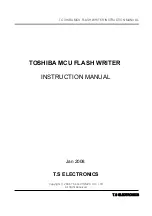
4-12
X9SCFF-F User’s Manual
Super IO Configuration
Serial Port 1
Select Enabled to enable the onboard serial port. The options are
Enabled
and
Disabled.
Serial Port 1 Settings
This option specifies the base I/O port address and the Interrupt Request address
of Serial Port 1. Select
Auto to allow the serial port to automatically assign system
resources. The options for Serial Port 1 are
Auto
, (IO=3F8h; IRQ=4), (IO=3F8h;
IRQ=3, (IO=2F8h; IRQ=3), (IO=3E8h; IRQ=5), (IO=2E8h; IRQ=7), (IO=3F8h;
IRQ=3, 4, 5, 6, 7, 10, 11, 12;), (IO=2F8h; IRQ=3, 4, 5, 6, 7, 10, 11, 12;), (IO=3E8h;
IRQ=3, 4, 5, 6, 7, 10, 11, 12;), and (IO=2E8h; IRQ=3, 4, 5, 6, 7, 10, 11, 12;)
Serial Port Console Redirection
COM 1, SOL
These two submenus allow the user to configure the following Console Redirection
settings for a COM Port specified by the user.
COM1, SOL Console Redirection
Select Enabled to use a COM Port selected by the user for Console Redirection.
The options are
Enabled
and Disabled. The default setting for COM1 is
Disabled
,
and for SOL is
Enabled
.
Console Redirection Settings
Terminal Type
This feature allows the user to select the target terminal emulation type for Con-
sole Redirection. Select VT100 to use the ASCII Character set. Select VT100+ to
add color and function key support. Select ANSI to use the Extended ASCII Char-
acter Set. Select VT-UTF8 to use UTF8 encoding to map Unicode characters
into one or more bytes. The options are
ANSI, VT100,
VT100+
, and VT-UTF8.
Bits Per second
Use this feature to set the transmission speed for a serial port used in Console
Redirection. Make sure that the same speed is used in the host computer and the
client computer. A lower transmission speed may be required for long and busy
lines. The options are 9600, 19200, 38400, 57600 and
115200
(bits per second).
















































